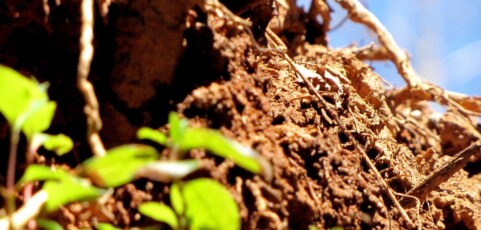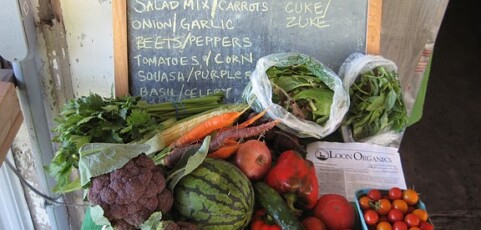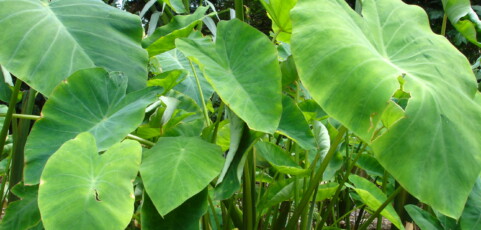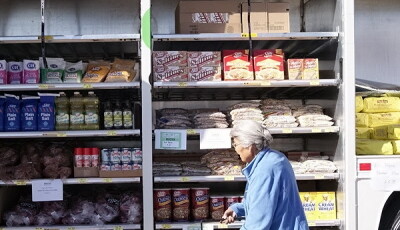Conventional strawberry production systems depend more heavily on nonrenewable energy and industrial inputs than organic systems.
Cajete Terracing Systems in Tlaxcala, Mexico
The Cajete terrace system of collecting water and reducing soil erosion has been in use since pre-Hispanic times (1000 B.C.). Particularly important in present agriculture practices where people must grow their food on steep, erosion prone slopes.
Loon Organics
This case study describes how the husband-and-wife team became interested in farming, how they got their training, and how they transitioned from farming on land rented from mentors to buying their own 40-acre farm.
Clover Valley Farms
This case study describes how Cindy and Jeff started working toward their farming dreams in 1999, how they have gradually added enterprises, and how they integrate farming with their off-farm jobs and their overall lifestyle.
Planning for Organic Conversion in Taro in Molokai, Hawaii, USA
Using cover crops, intercropping and other techniques of organic farming to grow taro (Colocasia esculenta) to determine economic sustainability and improved soil quality.
Biological Control of Gramineous Stemborers in Kenya, Africa
Read More“Bring the food to them”: A different kind of food truck
It’s a very simple concept designed to overcome the barriers of affordability and access to healthy foods. The MoGro vision is to eliminate food deserts in New Mexico so that all communities have access to healthy, affordable, and sustainably-sourced foods.
Adoption Process of Agroecological Alternatives in a “Campesinos” Farming System in Yucatan, Mexico
Green manures and cover crops, IPM, manuring, agroforestry and organic horticulture alternatives are developed, tested and transferred through participatory adoption processes with farmers.
“Milpa” Agroecosystems in Yucatan, Mexico
Milpa in Yucatan is an intercropping system of corn, beans, lima beans and squash that is managed through slash and burn with fallow periods and the use of mulch.












